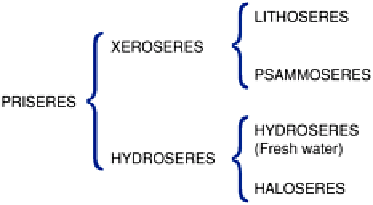Environmental Engineering Reference
In-Depth Information
Whilst the broad principles of Clements's theories of succession form the basis of our
understanding, several amendments of his basic model are now accepted. Three
alternative models are illustrated in Figure 21.4. The
facilitation model
mostly follows
Clements and envisages the establishment of plant communities which modify the
physical conditions so that they become favourable to late successional species. In the
tolerance model
successive stages in the succession depend upon the competitive
abilities and life spans of the plants, so that, for example, the longer-lived species
associated with later stages will persist in the community. The third alternative, the
inhibition model
, envisages the initial plant cover modifying the physical habitat so that
it is
less
favourable to colonization by other species, and succession can occur only when
the inhibitory species are removed.
The classical views of succession are thus becoming modified as it is realized that it is
a more complex process
Figure 21.3
The classification of priseres according to dry
(xero-) and wet (hydro-) starting points.
Source: After Eyre (1968).
Table 21.1 Fundamental successional processes
Term
Process
Nudation
Initial creation of bare surface
Immigration
Arrival of available propagules
Ecesis
Establishment of propagules
Reaction
Interaction of plants and of plants and habitat
Stabilization
Creation of equilibrium communities
Source
: After Clements (1916).







